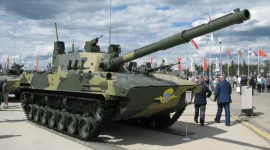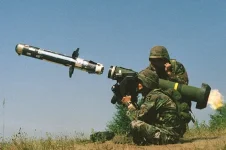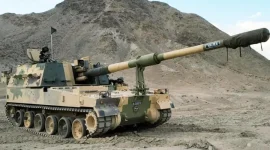- Views: 3K
- Replies: 9
In a significant shift in force protection strategy, the Indian Army has begun deploying low-tech physical barriers to counter high-tech threats at forward air bases.
Along the western frontiers and specific sectors in the east, military helicopters and aircraft are now being shielded by mobile "anti-drone cages" designed to intercept explosive-laden unmanned aerial vehicles (UAVs).
A Shift in Ground Defence
The sight at forward air bases in Northern India has changed dramatically in recent months.Chetak helicopters, a staple of Indian military aviation since the 1960s, are no longer parked openly on the tarmac. Instead, upon landing, they are immediately rolled into large, black enclosures.
These structures are not permanent concrete hangars but are constructed from rigid scaffolding frames covered in thick nylon netting.
While they resemble large aviaries or cricket practice nets, their purpose is critical: to act as the last line of defence against swarms of cheap, commercial drones modified to carry explosives.
Mechanics of the "Cope Cage"
The operational concept is rooted in simplicity. According to defence sources, these cages are assembled from standardised scaffolding that a team of six soldiers can erect in less than forty minutes.The netting, while unable to stop a bullet, is robust enough to entangle or destroy the rotors and wings of small drones.
Tests conducted in 2024 by the Army Aviation Corps in collaboration with the Defence Research and Development Organisation (DRDO) validated this approach.
The barriers achieved a 97 per cent interception rate against various threats, including hobbyist quadcopters and fixed-wing suicide drones weighing under twenty-five kilograms. When a drone strikes the mesh:
- High-speed FPV drones disintegrate upon impact.
- Loitering munitions are triggered at a safe distance from the aircraft.
- Larger UAVs lose flight stability and crash harmlessly outside the protective perimeter.
Triggered by Recent Threats
The adoption of this "passive defence" measure was accelerated following the October 2023 drone attack on the Jammu Air Force Station. In that incident, explosive drones damaged the roof of a hangar housing Mi-17 helicopters, highlighting the vulnerability of parked aircraft to low-cost aerial threats.Consequently, this protection has become standard operating procedure (SOP). Squadrons operating Chetak, Cheetah, and Dhruv helicopters within 100 kilometres of the border now utilise these cages.
At larger airbases, the system has been scaled up to create covered walkways—resembling livestock pens—capable of sheltering larger assets such as MiG-21 and Mirage 2000 fighter jets.
Cost-Effective and Operationally Sound
While the Indian defence establishment continues to develop sophisticated "soft-kill" measures like electronic jammers and "hard-kill" options like laser weapons, these physical barriers offer immediate advantages.Electronic countermeasures require significant electrical power and create "dead zones" that can jam friendly communications. Furthermore, the use of high-power jammers is heavily regulated within Indian airspace.
In contrast, the net system requires no electricity and creates no electronic signature.
Financially, the solution is highly efficient. Each unit costs approximately ₹8 lakh, a fraction of the cost of sophisticated air defence systems or even two shoulder-fired surface-to-air missiles.
Broader Context
This move aligns with global military trends observed in recent conflicts in Eastern Europe and the Middle East, where physical screens (often termed "cope cages") have been fitted onto tanks and armoured vehicles to deflect top-attack munitions.By adapting this concept for aviation, the Indian Army has secured a practical solution to the asymmetry of drone warfare, ensuring that multimillion-dollar aircraft are not destroyed by cheap, off-the-shelf technology.





